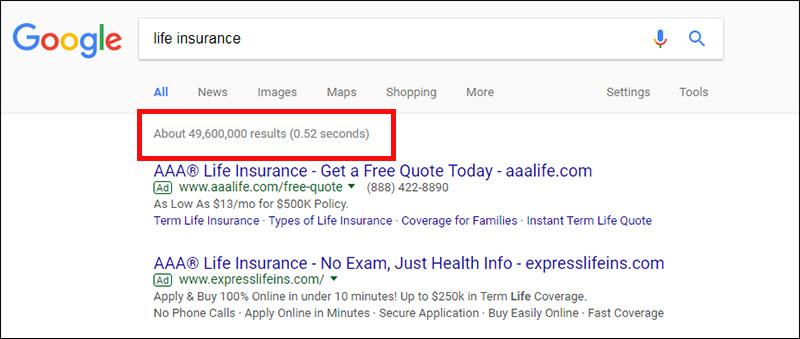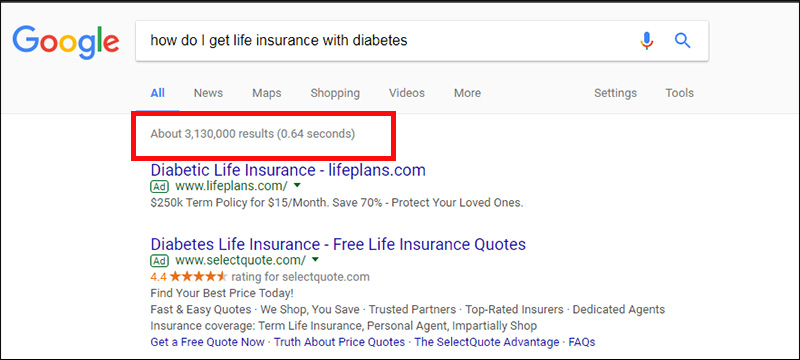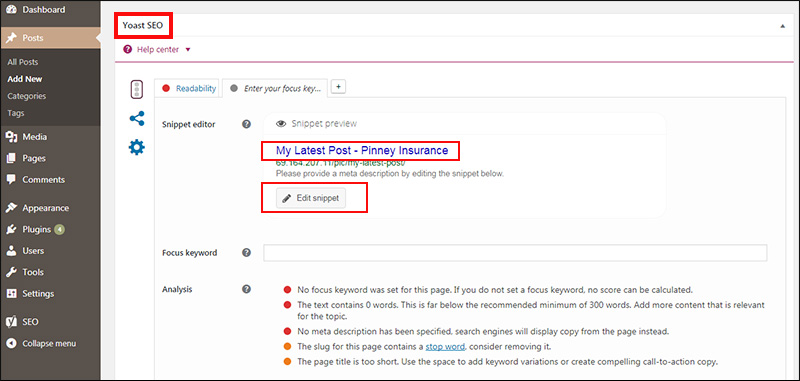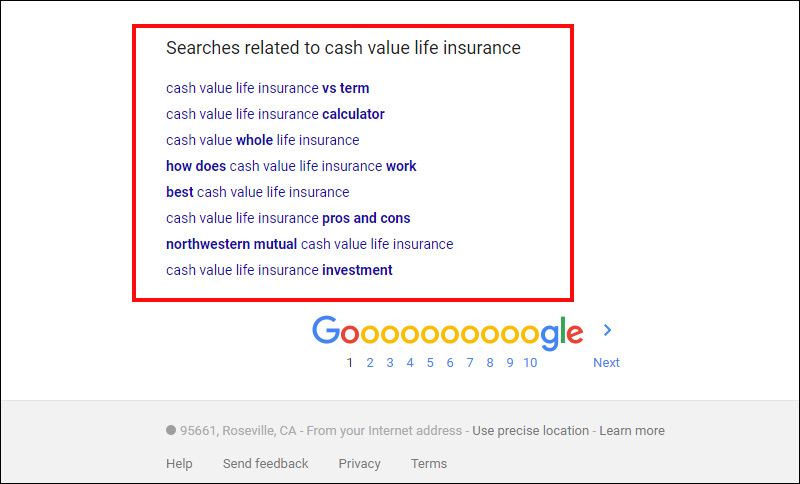
Updated: 5/17/2023
The right SEO keywords can help you climb to the top of the search results. Using keywords keeps your content focused on a particular topic, which is great for readers. They're also great for boosting your site's discoverability, when used correctly - and with a little creativity.
These tips are for everyone, whether you’re good at writing or not. If a copywriter wrote your website content, you can go back and apply these SEO tips over the top of what they’ve written. If you write your own content, this post will show you how to make sure your keywords aren't turning Google - and your readers - off.
Step 1: Put Prospects First
Before you get started, you need to accept this fundamental concept: write for readers, not for search engines. That seems disingenuous, being that the point of this article is to help you with SEO. But most SEO experts aren’t copywriters, and most copywriters aren’t SEO experts. I’m going to show you how to apply tricks from both disciplines so you can create content that’s useful for readers and attractive to search engines.
This process doesn't have many clear-cut answers. You'll have to make some judgment calls. When in doubt, ask yourself: does what I’m doing make this content better for the reader? If the answer is yes, you're good to go. If the answer is no, there's probably a better solution, whether it's a different keyword or inserting that keyword somewhere else in your content.
Step 2: Choose Your SEO Keywords
Start by optimizing for one keyword per page. Ideally, your page will answer a user’s question, present a concept, define a word, or describe a situation. Don’t let the word “keyword” mislead you, either. Keywords are usually phrases, or even questions – anything someone might type into a search box. The longer and more specific a keyword is, the more likely you will rank for it.
For example, “life insurance” is a terrible keyword. It’s too broad, too short, and chock-full of competition. Seriously. There are over 49 million results.

An example of a better keyword is “how do I get life insurance with diabetes.” Notice that it’s a question, not a noun. You have far fewer results, which means you stand a better chance of ranking. Niche markets are much easier to rank for, in general.

Look for the Long Tail
You may have heard the phrase “long tail keyword.” This is the SEO term used to describe longer keywords that have fewer results but are easier to rank for. Spend some time brainstorming keywords, from products to carriers to concepts to niche markets. Include some in the form of a question, as if your prospect were using voice search.
Next, run your keyword options through Google. Note the volume of results. It's hard to quantify this, but in general, keywords with more than a few million results will be hard to rank for. Similarly, keywords with fewer than 1,000 results mean not too many people are searching for this keyword - and you aren't likely to generate many leads.
This topic could be a post in and of itself. Here’s our beginner’s guide to keywords to get you started. If you’d like to see us tackle this in more depth, tell us in the comments and we’ll put it on the schedule.
PRO TIP: Skip ungrammatical keywords like “best life insurance cheap.” You’ll end up with content that’s awkward to read, which creates a bad user experience. Pull out the word or idea you think your prospect is really after (i.e., “best” or “cheap”). Try to come up with long-tail variations you can support with better (grammatical) content, like “how to find the best life insurance policy” or “how to find cheap life insurance.”
PRO TIP: Turn your keywords into their opposites to get even more ideas. For example, if you’re using “how to find cheap life insurance,” take a minute to think about the opposite of “cheap.” You might find new, less competitive keyword ideas like “is life insurance expensive?” or “why is life insurance expensive for seniors?”.
Step 3: Add Keywords to Three Critical Locations
There are three key locations in your content that help tell Google what you’re writing about. It’s a good idea to make sure your keyword appears in all of them. If you use WordPress and the Yoast SEO plugin, you’ll be prompted to check each of these locations by the SEO analysis at the bottom of your post or page.
Location 1: Title Tag
Your page or posts's title tag is the clearest indicator of your content’s subject matter – it’s what shows up in Google’s search results, enticing people to click.

In terms of HTML, your page title comes from the content contained in the title tag (<title>Page Title Here</title>). This is also what displays on a browser tab. Don't confuse a page's title tag and the title of an article you see at the top of a web page. These are often be the same, but they don't have to be. If you’re using WordPress, you can tweak your page titles using an SEO plugin (we use Yoast SEO). Below every post or page, you have the option to create custom titles and descriptions:

If you’re hard-coding your site, you can manually add a title tag to the head of your HTML document. Your page title, by contrast, is probably within h1 tags.
PRO TIP: Your page title needs to convince the reader to click through from the search results. Don’t be afraid to experiment with eye-catching page titles. The catch? Your content needs to follow through. Don't use a title like "Everything You Need to Know about [keyword]" unless your page contains thousands of words of helpful information.
- [keyword]: What Other Agents Won’t Tell You
- What No One Told You about [keyword]
- Trade Secrets of [keyword]
- My Top Tips for [keyword]
- Forget What You Know about [keyword]
- [keyword] Isn’t What You Think It Is
- [keyword question]: I’ll Tell You
- Finally – The Answer to “[keyword question]”
Need a little more inspiration? Check out these title generators for ideas:
- ContentRow: Link Bait Title Generator
- Portent: Content Idea Generator
Location 2: First Sentence
Okay, so you have your keyword in your page title. As redundant as it sounds, you want to repeat that keyword in the first sentence of your content. Why? Because Google doesn’t trust that you’re really addressing that keyword just because it’s in the page title. Including it in the first sentence is a good indicator your content is on topic.
The easiest (and least creative) way to accomplish this is to use a boring sentence like “In this post, I’m going to talk about [keyword].” But your reader already knows this - it's why they clicked through. Instead, we want to turn this first sentence into an invitation to keep reading. Here are a few ideas:
- What you don’t know about [keyword] might not hurt you, but it will cost you money.
- Have you ever laid awake at night wondering, “[keyword question]”?
- I can’t tell you how many clients come to me asking, “[keyword question]?”
- No Magic-8 ball can answer the question, “[keyword question]?”
- If I could tell my clients one thing about [keyword], it’s this.
- [keyword] isn’t the most fascinating topic on the internet, but knowing about it can save you money.
- I had to write about [keyword] because so many of my clients asked me about it.
- If you’re freaked out about [keyword], you’re not alone.
- This is a story about [keyword] – and it’s got its twists and turns, just like any good novel.
Location 3: One Subhead
Subheads break up your text and indicate what the coming paragraphs will be about. Because they function as a guidepost to the content on a page, they carry more SEO weight than regular sentences. If possible, include your keyword in at least one of your subheads.
PRO TIP: Can’t find a way to make your keyword fit naturally into a subhead? No problem! You can always add the keyword to a new subheading at the bottom of your content, and ask for feedback or provide a summary. If your keyword is a question, just preface it with “Summary” and provide a bullet-point summary beneath your subhead. Here are a few examples:
- Summary: What I Learned about [keyword]
- What Do You Think about [keyword]?
- Share Your Thoughts on [keyword]!
- What Else Do You Want to Know about [keyword]?
- Summary: [keyword question]
- Next Steps: [keyword question]
- Let’s Recap: [keyword question]
Step 4: Check Keyword Density
In addition to having your SEO keywords in the three critical locations above, it’s a good idea to include them in your text several times. “Several times” isn’t an exact number, however, and there's a good reason for that. Google penalizes sites that “stuff” their content with too many keyword repetitions. But how much is too much? How much is too little? As a point of reference, the Yoast SEO plugin will give you a green light when your density reaches 0.5%.
Remember, the goal is to provide valuable information to the reader. Sometimes that requires using a keyword frequently (multiple times per paragraph, for example). If that’s the case, you want to make sure your page is at least 300 words long, preferably between 500 – 1,000. This cuts down on the density, telling Google that you’re providing supporting detail without keyword stuffing.
On the other hand, if it’s really hard to work in a keyword, look at the bullet point suggestions for subheads and opening sentences above. Use these suggestions to increase your keyword density without making the content either ungrammatical or too keyword-stuffed to be helpful for your prospects.
Step 5: Add Keyword Variations
One of the best ways to tell Google your page is really about a particular keyword is to use related words. If you were talking to a client, you wouldn’t say “how to find the best prices on life insurance” over and over. You might, however, use phrases like “affordable policies,” “price break,” and “low rates.”
Google’s algorithm knows this. In other words, it's smart enough to figure out what words and phrases people usually use when they write about life insurance. In SEO jargon, this is called "latent semantic indexing."
Google gives you an easy way to find the words associated with your keyword. Just type that keyword into the search box and look at the suggestions that appear at the bottom of the results.

Since Google is pretty sure these searches relate to your keyword, it’s a good idea to choose 2-3 of these words and/or phrases and work them into your content. If you use the Google Ads Keyword Planner, pop these related terms into it to get even more suggestions. To use this tool, you need to sign up for AdWords, but you don’t have to buy any ads or pay any money. If you’d don’t want to sign up, you can also get related search terms from LSIGraph.com’s LSI Keyword Generator.
That’s our quick look at creative ways to use SEO keywords!
If you can create informative, engaging content that also uses SEO keywords as described above, you'll be in good shape with the search engines. Having trouble choosing keywords...or figuring out how to get a particular keyword into your content? Tell us in the comments...and I'll try to help!
